The Bowfin is a North American freshwater fish species. People throughout North America also refer to this species as mudfish, swamp trout, beaverfish, blackfish, and more.
Its closest relatives are the gars. This species spends most of its time at the bottom of lakes and rivers searching for small prey. Read on to learn about the Bowfin.
Description of the Bowfin
These fish have relatively long bodies, a dark mottled pattern across their scales, an elongated dorsal fin on their backs, and a black spot near their tails. The dorsal fin runs along much of the length their backs.
Most individuals measure between 17 and 24 in. long. The largest individuals weigh in at around 20 lbs. and reach up to 43 in. long.
Interesting Facts About the Bowfin
These unique fish have several different traits and adaptations to help them survive. Learn more about what makes this species so interesting below.
- Eye See You – This species bears a dark black spot right near their tails. This is known as an “eyespot.” Despite the name, they cannot see through the eyespot.
- Form and Function – Generally, eyespots either make the animal look larger than it is to deter predators, or they distract a predator from more vital body parts. In the case of this species, the eyespot keeps predators away from the fish’s head so that it can escape.
- Brighter Males – The eyespot is also an easy way to tell the difference between a male and female fish. In males, the area around the eyespot has orange or yellow scales. Females have no color around the eyespot.
- What’s in a Name? – The term “Bowfin” refers to the extensive dorsal fin on this species. The long fin somewhat resembles the bow of a ship.
Habitat of the Bowfin
This species prefers living in freshwater habitats with a wide variety of dense vegetation. They inhabit lakes, streams, swamps, rivers, ponds, and wetlands.
Within their habitat they are particularly fond of fallen logs, or submerged roots and branches, because it provides protection from predators. In some regions, these fish also enter brackish water environments.
Distribution of the Bowfin
You can find this fish in freshwater habitats throughout much of the eastern United States. Their range also extends north into Canada. Humans introduced this species into some regions within the Northeast United States as well.
Their range extends from eastern Texas, along the Gulf Coast, through Florida, and north to Vermont. You can also find these fish as far west as Minnesota and Iowa, from which their range extends south to Texas, and everything in between.
Diet of the Bowfin
This species is a carnivore, which means that it eats other animals. It is opportunistic, and eats just about anything that it can fit in its mouth. Some of its favorite foods include insects, smaller fish, frogs, shrimp, crayfish, crabs, salamanders, and more.
When hunting, this fish uses a combination of lunging and suction to capture prey. It surges forward and snaps its jaws open quickly enough to create a suction. This suction pulls the prey into its mouth.
Bowfin and Human Interaction
Humans do catch this fish, but usually do not eat its meat. However, they do eat the young of other game fish, which makes them a pest to fishermen. Currently, their populations are stable, and the IUCN lists them as Least Concern. Potential future threats include destruction of wetland habitats, pollution, and climate change.
Domestication
Humans have not domesticated this fish in any way.
Does the Bowfin Make a Good Pet
Though this species doesn’t necessarily make for a bad pet, it is a less-than-friendly aquarium guest. It will eat just about any other fish that it can fit into its mouth. Additionally, it grows quite large, which makes it difficult to house.
Bowfin Care
While they are young, these fish do not require ample space. However, as they inevitably grow larger, they will outgrow many aquariums. Adults and young alike need plenty of room to explore, and a variety of hiding places. As a predator, this species eats just about anything, including smaller fish in their tank.
Behavior of the Bowfin
These fish forage periodically throughout the night and day. During the day, when they are more visible to potential predators, they move into deeper waters. When they hunt at night, they move to shallow areas. Outside of the breeding season, this species is solitary.
Reproduction of the Bowfin
As breeding season approaches, males move to shallow waters to build nests out of underwater grasses and vegetation. Females lay their eggs in the male’s nest, and the male fertilizes them. Several different females will lay eggs in a single nest.
Unlike most other fish, male Bowfins guard their nests and offspring. He fans fresh water over the eggs with his fins, and chases away predators and rivals. The male continues to guard the young until they reach about four inches long.


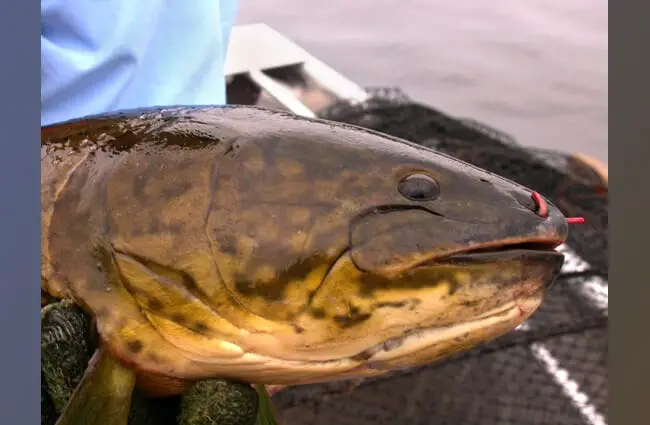
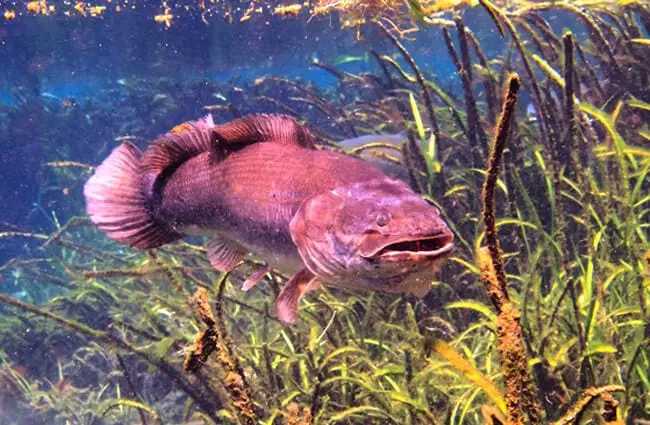



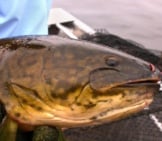
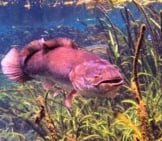
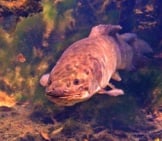
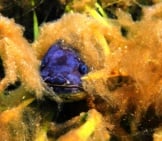
![Red Angus Closeup of a beautiful Red Angus cowPhoto by: U.S. Department of Agriculture [pubic domain]https://creativecommons.org/licenses/by/2.0/](https://animals.net/wp-content/uploads/2020/03/Red-Angus-4-238x178.jpg)












![Red Angus Closeup of a beautiful Red Angus cowPhoto by: U.S. Department of Agriculture [pubic domain]https://creativecommons.org/licenses/by/2.0/](https://animals.net/wp-content/uploads/2020/03/Red-Angus-4-100x75.jpg)

